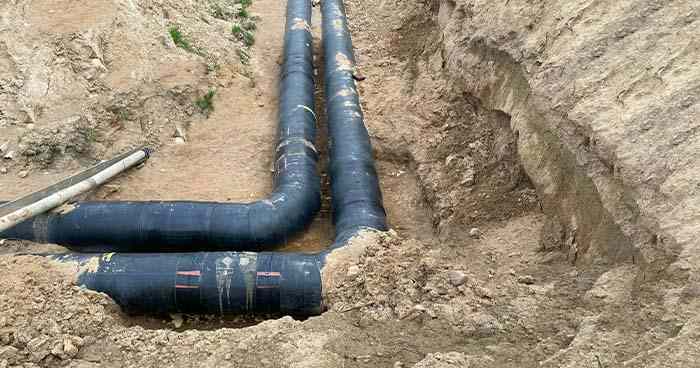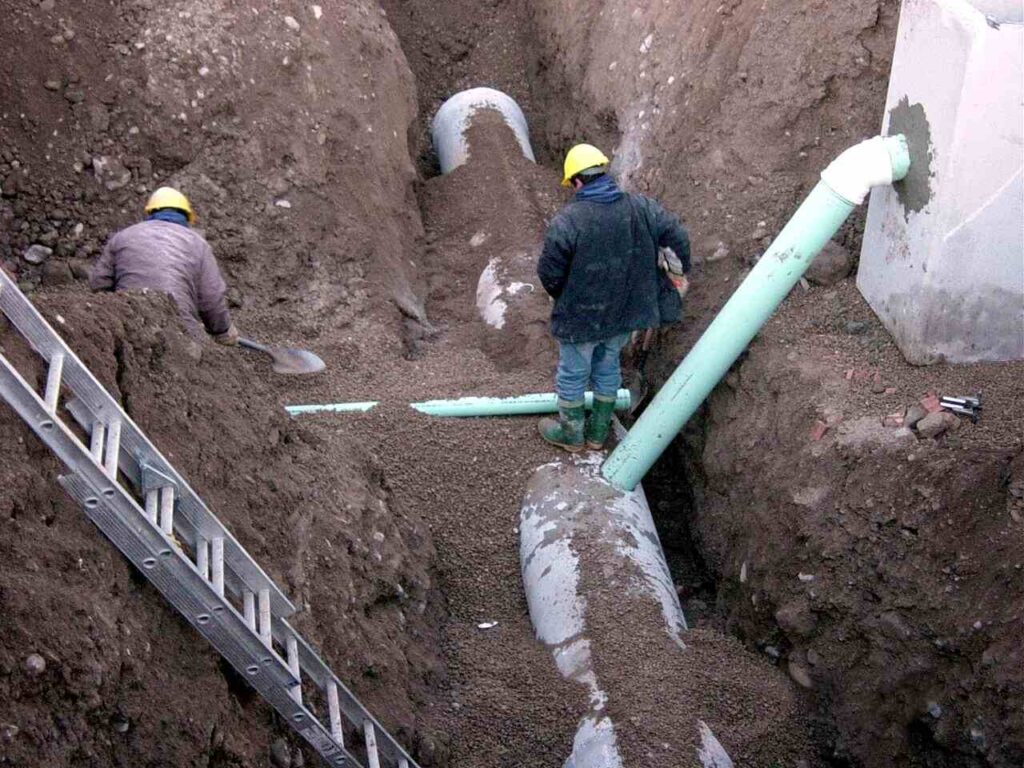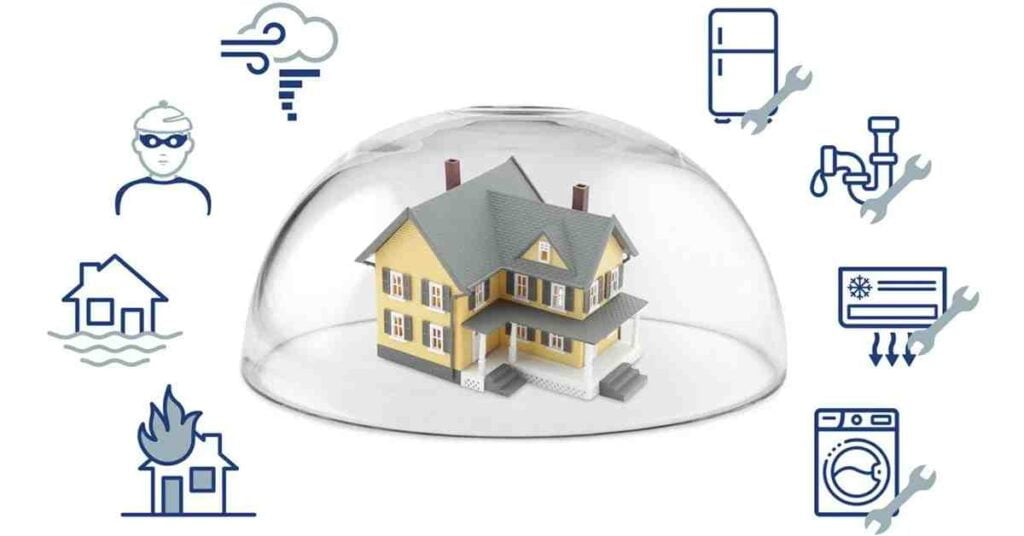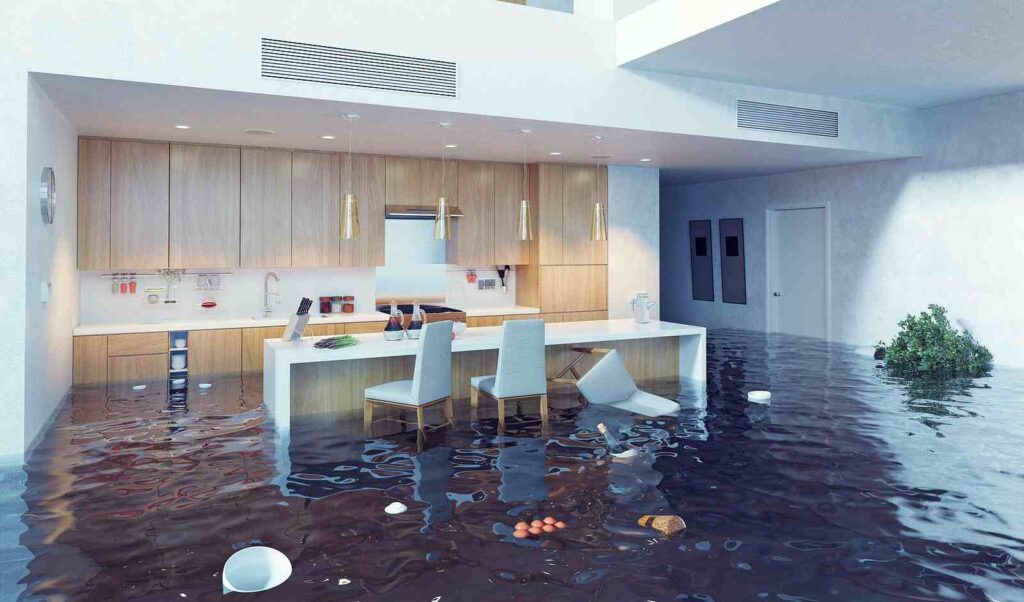Owning a home comes with many responsibilities, and one of them is maintaining the plumbing system. Over time, pipes can wear out, corrode, or develop leaks, leading to the need for repiping. However, repiping can be expensive, and one common question homeowners have is, “Does homeowners insurance cover repiping?”
In this article, we’ll explore what repiping is, why it might be necessary, and whether homeowners insurance can help pay for it. We’ll also look at common situations where insurance might cover plumbing issues and when it might not. By the end, you’ll have a clear understanding of what to expect from your insurance policy when it comes to repiping.
Does Homeowners Insurance Cover Repiping?
Homeowners insurance can cover repiping under certain conditions. Here are some scenarios where repiping might be covered:

- Sudden and Accidental Damage: If a pipe suddenly bursts due to freezing temperatures, causing water damage to your home, your insurance may cover both the damage and the cost of repiping the affected area. Similarly, If a pipe fails unexpectedly due to a flaw or an external force (like a tree root causing damage), insurance may cover the necessary repairs, including repiping.
- Water Damage Coverage: Most homeowners insurance policies cover water damage that results from sudden and accidental pipe bursts. If repiping is required as part of the repair process for covered water damage, it may be included. Similarly, If mold or mildew develops as a result of a sudden pipe failure, insurance might cover the remediation and the repiping required to prevent further damage.
- Dwelling Coverage: If a sudden pipe failure compromises the structural integrity of your home, dwelling coverage under your insurance policy may pay for repiping as part of the necessary repairs to ensure your home is safe.
- Perils Listed in the Policy: Your homeowners insurance policy lists perils (events) that are covered, such as fire, vandalism, or sudden collapse. If pipe damage occurs due to a covered peril, the insurance may cover the costs associated with repiping.
- Endorsements and Riders: Some homeowners purchase additional coverage through endorsements or riders that may specifically include plumbing or older pipes. If repiping is needed and it falls under the additional coverage, it may be covered.
- Coverage for Partial Repairs: In some cases, the insurance company may only cover repiping for the section of the plumbing that was directly affected by the covered damage, rather than the entire home.
- No-Fault States: In some regions, no-fault water damage clauses might cover repiping if the damage occurs without the homeowner’s direct fault, regardless of the specific cause.
When Homeowners Insurance Does Not Cover Repiping
Homeowners insurance does not cover repiping in certain situations. Here are some scenarios where repiping might not be covered:
- Gradual Wear and Tear: If the pipes have corroded over time due to natural wear and tear, the insurance policy typically does not cover the cost of repiping. Similarly, the accumulation of mineral deposits in the pipes over time is considered a maintenance issue and is not covered by insurance.
- Lack of Maintenance: If the homeowner has neglected regular maintenance and inspections, leading to plumbing issues, the insurance policy may not cover the cost of repiping. If known plumbing issues are ignored and not repaired promptly, the insurance may deny coverage for repiping.
- Pre-Existing Conditions: If the plumbing system had pre-existing damage before the insurance policy was in effect, the cost of repiping is not covered. Similarly, older plumbing systems that have not been updated or maintained may not be covered for repiping.
- Excluded Perils: Damage caused by floods is typically not covered under standard homeowners insurance policies. Separate flood insurance is required for such coverage. Similarly, damage caused by earthquakes is also not covered under standard policies. Separate earthquake insurance is needed for coverage.
By understanding these scenarios, homeowners can take proactive steps to maintain their plumbing systems and ensure they have the necessary coverage.
Steps to Take If You Need Repiping
If you suspect that your home needs repiping, it’s important to take the right steps to ensure the process goes smoothly and is covered by your homeowners insurance if applicable. Here are the steps to follow:

- Assess the Situation: Look for signs that repiping might be necessary, such as low water pressure, discolored water, frequent leaks, or unusual noises in the plumbing system, and hire a licensed plumber to inspect your plumbing system and confirm whether repiping is needed.
- Review Your Insurance Policy: Review your homeowners insurance policy to understand what is covered and what is not. Look for specific clauses related to plumbing and repiping. Speak with your insurance provider to clarify any questions and confirm whether repiping is covered under your policy.
- Document the Damage: Document the condition of your plumbing system with photos and detailed descriptions of any damage, and maintain records of any inspections, maintenance, and repairs that have been done on your plumbing system.
- Get Quotes from Professionals: Obtain quotes from multiple licensed plumbers to get an idea of the cost of repiping. Compare the estimates and choose a reputable plumber with experience in repiping.
- File an Insurance Claim: Provide your insurance company with all necessary documentation, including photos, inspection reports, and estimates from plumbers. Stay in touch with your insurance provider to ensure your claim is processed promptly.
- Schedule the Repiping Work: Schedule the repiping work at a convenient time and ensure you understand the scope of the project. Make any necessary preparations in your home to accommodate the repiping work, such as clearing access to plumbing areas.
- Monitor the Work: Stay informed about the progress of the repiping work and communicate with the plumber if you have any questions or concerns. Once the repiping is complete, inspect the work to ensure it meets your expectations and addresses the issues.
- Maintain Your New Plumbing System: Schedule regular inspections to keep your new plumbing system in good condition. Address any issues promptly to prevent future problems and maintain the integrity of your plumbing system.
By following these steps, you can ensure that the repiping process is handled efficiently and that you have the best chance of getting coverage from your homeowners insurance if applicable.
Tips to Maintain Your Plumbing System
Proper maintenance of your plumbing system can help prevent the need for costly repiping. Here are some tips to keep your plumbing in good condition:
- Regular Inspections: Have a licensed plumber inspect your plumbing system annually to identify and address potential issues early. Regularly check for visible signs of leaks, corrosion, or damage in accessible areas of your plumbing system.
- Preventative Measures: Insulate exposed pipes, especially in colder climates, to prevent freezing and bursting. If you have hard water, consider installing a water softener to reduce mineral buildup in your pipes.
- Proper Usage: Use natural or enzymatic drain cleaners instead of harsh chemicals that can damage pipes. Avoid pouring grease or oil down the drain, as it can solidify and cause blockages.
- Timely Repairs: Address any leaks or drips as soon as you notice them to prevent further damage. Replace worn-out or damaged parts, such as washers and seals, to maintain the integrity of your plumbing system.
- Water Pressure Management: Ensure your water pressure is within the recommended range (usually 40-60 psi). High water pressure can stress pipes and cause leaks. If necessary, install a pressure regulator to maintain safe water pressure levels.
- Regular Cleaning: Regularly clean drains to prevent clogs and buildup. Use a mixture of baking soda and vinegar for a natural cleaning solution. Periodically flush your water heater to remove sediment buildup and improve efficiency.
- Educate Household Members: Educate everyone in your household about what can and cannot be flushed or poured down the drains. Ensure everyone knows where the main water shut-off valve is located and how to use it in case of an emergency.
How to Get Homeowners Insurance to Pay for New Windows?
By following these tips, you can maintain your plumbing system in good condition and reduce the likelihood of needing repiping. Regular maintenance and timely repairs are key to extending the life of your plumbing system and avoiding costly issues.
Alternative Financing Options for Repiping
If repiping isn’t covered by your homeowners insurance, there are several alternative financing options you can consider to manage the costs:
- Home Equity Loan: A home equity loan allows you to borrow against the equity you’ve built up in your home. This type of loan typically has a fixed interest rate and is repaid over a set period.
- Home Equity Line of Credit (HELOC): Similar to a home equity loan, a HELOC lets you borrow against your home’s equity, but it functions more like a credit card. You can draw funds as needed up to a certain limit and pay interest only on the amount you borrow.
- Personal Loan: Personal loans are unsecured loans that can be used for various purposes, including home repairs. They usually have higher interest rates compared to home equity loans but don’t require collateral.
- Cash-Out Refinance: This option involves refinancing your existing mortgage for more than you owe and taking the difference in cash. This can provide a lump sum to cover the cost of repiping.
- Credit Cards: For smaller repiping projects, using a credit card might be an option. Look for cards with low or zero-interest introductory rates to minimize interest costs.
- Government Assistance Programs: Some government programs offer financial assistance for home repairs, especially for low-income homeowners. Check with local or federal housing agencies for available programs.
- Contractor Financing: Some plumbing contractors offer financing plans directly. These plans can be convenient but may come with higher interest rates, so it’s important to compare terms.
- Savings: If possible, using your savings to pay for repiping can avoid the costs associated with borrowing. This might be the best option if you have sufficient funds set aside.
- Home Improvement Loans: These are specific loans designed for home repairs and improvements. They can be secured or unsecured and often have favorable terms for homeowners.
- Reverse Mortgage: For homeowners aged 62 and older, a reverse mortgage allows you to borrow against your home’s equity without having to make monthly payments. The loan is repaid when the home is sold or the homeowner passes away.
FAQs
Q 1. What is the average cost of repiping a house?
Ans. The average cost of repiping a house in the U.S. is around $7,500, with most homeowners spending between $1,500 and $15,000. The total cost can vary widely based on factors such as the size of the house, the number of plumbing fixtures, the type of pipe material used (e.g., copper, CPVC, PEX), and the accessibility of the pipes. Labor costs, which typically make up about 75% of the total expense, also play a significant role. Additionally, geographic location can influence the cost due to differences in local labor rates and material prices.
Q 2. How long does the repiping process take?
Ans. The duration of the repiping process depends on the size of the house and the complexity of the plumbing system. Typically, repiping a house can take anywhere from a few days to a week.
Q 3. What types of pipes are commonly used for repiping?
Ans. Common types of pipes used for repiping include copper, PEX (cross-linked polyethylene), and CPVC (chlorinated polyvinyl chloride). Each type has its own advantages and disadvantages.
Q 4. Can I stay in my home during the repiping process?
Ans. In most cases, you can stay in your home during the repiping process. However, there may be periods when the water supply is temporarily shut off. It’s best to discuss this with your plumber to understand the specific details.
Q 5. Does homeowners insurance cover the cost of temporary housing during repiping?
Ans. Some homeowners insurance policies may cover the cost of temporary housing if your home becomes uninhabitable due to covered repairs. Check your policy or consult with your insurance provider for specific details.
Q 6. What should I do if my insurance claim for repiping is denied?
Ans. If your insurance claim for repiping is denied, you can request a detailed explanation from your insurance provider. You may also consider appealing the decision or seeking assistance from a public adjuster.
Q 7. Are there any alternatives to repiping?
Ans. In some cases, less invasive alternatives such as pipe relining or pipe coating may be viable options. These methods can repair the existing pipes without the need for complete repiping.
Conclusion – Does Homeowners Insurance Cover Repiping?
In conclusion, understanding whether homeowners insurance covers repiping is important for every homeowner. While insurance may cover repiping in cases of sudden and accidental damage, it often does not cover issues caused by gradual wear and tear or lack of maintenance. By regularly inspecting and maintaining your plumbing system, you can prevent many problems and avoid the need for costly repiping. Always review your insurance policy and consult with your provider to know what is covered. Taking these steps will help you protect your home and ensure you have the necessary coverage when you need it.

Shubham is a passionate insurance expert with years of experience in the industry. I write about home, auto, travel, life, and health insurance to help readers make informed decisions. My goal is to break down the details of coverage, costs, and claims in a straightforward, easy-to-understand way, so you can protect what matters most without the confusion.


